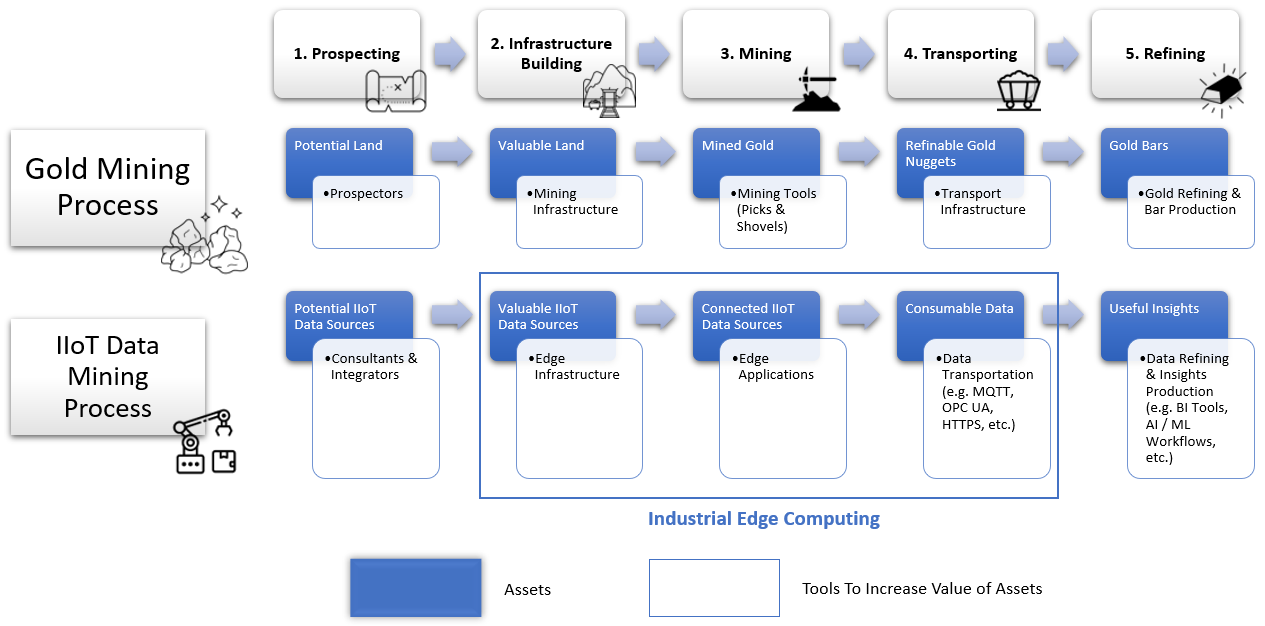Industrial Internet of Things (IIoT) and the Value of Collecting Data
Industry buzzwords can be tricky. Although they’re frequently used to engage in conversation about trends and innovations, the terms are constantly changing and can mean different things to different people.
Internet of Things (IoT) is an example. This general term is used across many industries to describe a growing trend in the deployment of smart devices—devices embedded with sensors, software and other technologies that allow them to connect to and exchange data with other devices and systems via the internet.
According to IoT Analytics, there will be more than 27 billion IoT devices connected worldwide by 2025. Because these devices will connect to a network, this leads to the need for lower latency, more bandwidth and heightened security—plus a network infrastructure that can support these requirements (in addition to ever-increasing data processing needs).
Because connected devices are emerging in industrial sectors and applications as well, the term Industrial Internet of Things (IIoT) has also been widely adopted. From our point of view, this term describes an environment where smart devices (in this case, an example could be hardware that handles industrial automation workloads like sensors, HMIs, remote I/Os, etc.) are connected to a network so they can share valuable data for decision-making purposes.
Why is IIoT Data Important?
There are myriad types of data that can be exchanged in an IIoT installation—from environmental data (temperature, humidity, etc.) and operational data (speed, flow, etc.) to network data (packet data, SNMP, etc.).
A lot of this data can be useful to the organization that collects it. How can you tell if data is useful? It should meet the following criteria:
- Valuable: It measures something that’s worth knowing/improving
- Accessible: It’s available to decision-making people or processes
- Portable: It moves seamlessly between disparate systems
- Contextualized: It’s understood by decision-making people or processes
- Secure: It’s available only to authorized systems
In order for data to be useful, it must also provide valuable insights that can be translated into actions. For example:

As your organization becomes more data centric, it’s imperative that you implement proper infrastructure to take advantage of the trove of useful data available from IIoT systems.
How Should Data Be Collected?
Because of the value of this data, it’s often referred to as “gold” within a business.
Consider how gold is obtained. Before it becomes a valuable commodity, it goes through a unique process:
- Prospecting
- Infrastructure building
- Mining
- Transporting
- Refining
Within each step of this intricate process, tools are deployed (such as mining tools) to glean value from the assets (land) affected by the process.
Just like gold mining, the process of IIoT data mining is complicated—but it follows a similar rationale. In order for IIoT data to become valuable to your organization, the right tools must be deployed to collect and process data so useful insights can be obtained from the affected assets.
The tools that make this possible in industrial environments are industrial edge solutions.

Check out the IIoT data mining process here.
Industrial edge computing, a subset of industrial edge solutions, is emerging as a valuable tool to realize steps 2 through 4 of the IIoT data mining process above. (This will be discussed in greater detail in our next blog.)
Belden Can Help with Every Aspect of Your Journey
No matter where you’re at in your digital-transformation journey—just thinking about getting started or already making infrastructure investments to support the proliferation of connected devices—Belden is here to act as your trusted advisor.
Our solutions help you create an industrial infrastructure that supports your industrial edge and IIoT goals. We help you not only move and protect your data, but also extract value from that data.
As we progress through 2022, we will be launching a series of robust industrial edge gateways and orchestration capabilities that will provide your industrial operations with secure, flexible and scalable edge compute functionality. Subscribe to our blog to stay up-to-date with information.
Belden's Technical Edge Product Manager, Matt Wopata, helped me write this blog, and he is a tremendous resource who can address any of your IIoT questions. If you want to know more about this topic, email me ([email protected]) or Matt ([email protected]).



